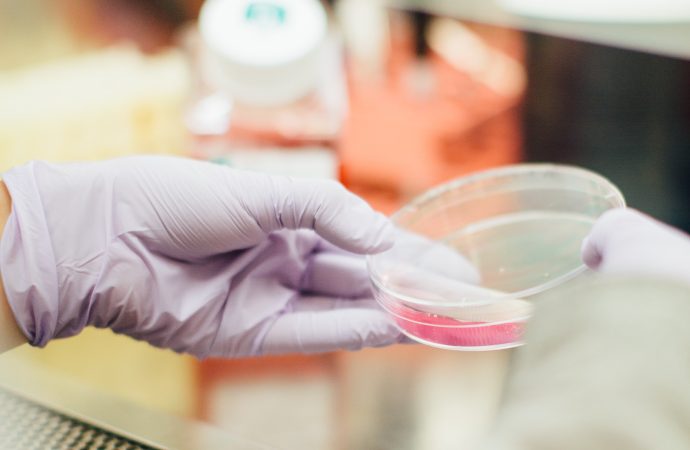In recent years, the potential of genetic engineering has been explored more and more. With advancements in technology, scientists have been able to manipulate genes in organisms to create desired traits or characteristics. This process, however, is not without its risks. In this blog post, we’ll be taking a look at the potential benefits and
In recent years, the potential of genetic engineering has been explored more and more. With advancements in technology, scientists have been able to manipulate genes in organisms to create desired traits or characteristics. This process, however, is not without its risks. In this blog post, we’ll be taking a look at the potential benefits and risks of genetic engineering. We will discuss how genetic engineering can be used to improve food production and help solve diseases, but we’ll also explore how it could potentially lead to unknown consequences. By the end of this article, you should have a better understanding of the capabilities and limitations of this new technology.
The Potential Benefits of Genetic Engineering
Genetic engineering is the direct manipulation of an organism’s genes. It is a set of technologies used to change the genetic makeup of cells and move genes across species boundaries to produce new organisms with desired characteristics.
The potential benefits of genetic engineering are vast. By manipulating genes, we can create crops that are resistant to pests and diseases, yielding higher yields with less need for pesticides and herbicides. We can also create plants that require less water or can grow in otherwise inhospitable environments.
In animals, we can use genetic engineering to increase disease resistance, improve growth rates, and modify coat color or other traits. In humans, we can use genetic engineering to correct for hereditary diseases and disorders. Additionally, by understanding the genes that influence complex traits like intelligence or athleticism, we may be able to enhance these qualities in future generations.
However, as with any new technology, there are also risks associated with genetic engineering. These risks range from the possibility of creating “Frankenstein” creatures if genes are not properly inserted into the DNA strand, to ethical concerns about playing God and tampering with nature.
Thus far, the benefits of genetic engineering seem to outweigh the risks; however, it is important to continue monitoring developments in this field in order to mitigate any potential negative consequences.
The Potential Risks of Genetic Engineering
Genetic engineering is the direct manipulation of an organism’s genome using biotechnology. It is a relatively new science, and as with any new technology, there are potential risks associated with its use.
The main risks of genetic engineering relate to its impact on human health, the environment, and the economy.
Health Risks
There are several potential health risks associated with genetic engineering. One of the most significant risks is the possibility that genetically engineered foods could cause allergies. If a person is allergic to a particular protein, and that protein is introduced into a food through genetic engineering, they could have a severe allergic reaction. There is also concern that gene transfer could create new viruses or bacteria that could cause disease. Additionally, there is the potential for unintended consequences resulting from the alteration of genes. For example, inserting a gene that confers resistance to a certain disease may also unintentionally alter other genes, resulting in unforeseen side effects.
Environmental Risks
Another area of concern related to genetic engineering is its impact on the environment. One worry is that genetically modified organisms (GMOs) could spread through the environment and harm non-target species. Another environmental concern is that GMOs could lead to the development of “superweeds” or “superbugs” – organisms that are resistant to herbicides or pesticides. This could lead to increased use of these chemicals, which would be harmful to both human health and the environment. Additionally, there is
How to Decide if Genetic Engineering is Right for You
There are a few key things to consider when deciding if genetic engineering is right for you. First, what is your goal? Are you hoping to change a trait or condition that runs in your family? Are you looking to improve your overall health? Once you know what you hope to achieve, do some research on the risks and benefits of genetic engineering.
Talk to your doctor about your goals and see if they have any recommendations. They may be able to refer you to a genetic counselor who can help you weigh the risks and benefits of genetic engineering. It’s also important to consider the financial cost of genetic engineering. Some procedures can be quite expensive, so make sure you have a clear understanding of the costs before making any decisions.
Ultimately, the decision of whether or not to pursue genetic engineering should be based on your personal goals and preferences. Weigh the risks and benefits carefully and talk to your doctor to make sure you are making the best decision for yourself.
Conclusion
As you can see, genetic engineering holds a lot of potential to improve our world. However, it is important that we consider the risks involved and take steps to ensure that any technology used for this purpose will be safe for ourselves and the environment. To do so, we need to continue researching this field in order to identify both the benefits and potential dangers posed by genetic engineering before using it on humans or other species. By doing so, we can make sure that these powerful technologies are used responsibly for everyone’s benefit.

















Leave a Comment
Your email address will not be published. Required fields are marked with *